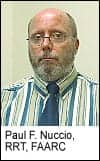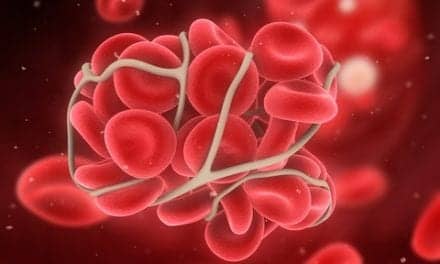Cancer researchers at Wake Forest University have identified six gene markers present in early stage non-small cell lung cancer (NSCLC) that show promise in helping oncologists better identify which tumors will relapse after curative surgery. The findings were presented at the 2010 Chicago Multidisciplinary Symposium in Thoracic Oncology.
Using a genomic tool referred to as a DNA microarray, the researchers focused on NSCLC at the molecular level to study how genes are turned on and off in tumors. They studied the gene profiles of hundreds of stage I non-small cell lung tumors obtained from various medical institutions worldwide. They discovered a six-gene prognostic classifier that stratified patients into low-, intermediate- and high-risk groups with significantly different relapse rates.
The six-gene, stage I NSCLC classifier—the S1N classifier—was then validated in a 179-pateint test cohort not involved in the gene discovery process. While the predicted low- and intermediate-risk cases showed similar survival rates, the high-risk, “poor outcome” group showed strong agreement with the training cohort with a 5-year relapse rate of greater than 80%. From this, the researchers were able to conclude that surgery followed by observation is not sufficient treatment for these high-risk stage I patients, who comprised approximately one third of the patient population.
“The goal of the project was to develop a personalized approach to the selection of patients with early stage lung cancer for whom more aggressive therapy may provide a survival benefit,” said Jimmy Ruiz, MD, lead author of the study and fellow of hematology and oncology at Wake Forest University School of Medicine. “While the S1N classifier still requires prospective validation, we believe it identifies a substantial fraction of high-risk stage I patients for who chemotherapy or investigational treatments should be considered.”
Source: American Society for Radiation Oncology









